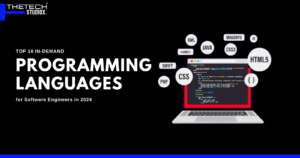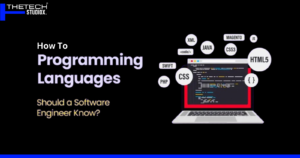Table of Contents
Introduction
Building modern web applications is all about creating seamless, fast, and user-friendly experiences, and that’s where Single Page Applications (SPAs) come in. You might have heard of popular SPAs like Gmail, Twitter, or even Netflix. But what makes these applications so fast and engaging? The answer lies in JavaScript frameworks. Let’s dive into the best JavaScript frameworks you can use to build an amazing SPA.
Why Use a JavaScript Framework for SPAs?
If you’ve ever tried building an SPA from scratch, you know how challenging it can be to manage states, update the user interface, and maintain a clean codebase. This is where JavaScript frameworks come in handy. They provide the necessary structure and tools to streamline these tasks, making your development process faster and more efficient.
Frameworks simplify data binding, routing, and component management, allowing developers to focus more on building great features rather than reinventing the wheel every time.
Top JavaScript Frameworks for Building SPAs
There are several JavaScript frameworks that developers can choose from to create SPAs, each with its own unique strengths and features. Let’s explore the best options available today.
React.js
History and Popularity: React was introduced by Facebook in 2013 and has since grown to become one of the most popular JavaScript libraries for building SPAs. The simplicity of its component-based architecture and its ability to efficiently update the virtual DOM have attracted millions of developers worldwide.
Key Features of React:
- Component-Based Architecture: Reusable components simplify development and maintenance.
- Virtual DOM: This improves performance by updating only necessary parts of the real DOM.
- Hooks: React Hooks allow you to manage state and lifecycle in functional components.
Advantages of React for SPAs: React’s popularity is no coincidence. It offers a great developer experience, especially when combined with tools like Redux for state management. Its rich ecosystem includes libraries for routing (React Router) and handling API calls (Axios), which makes building SPAs more efficient.
Drawbacks to Consider: React’s main drawback is its steep learning curve, especially for beginners. Its flexibility can also become a challenge, leading to inconsistencies across projects if developers aren’t careful.
Angular
Brief History of Angular: Angular, originally launched by Google as AngularJS in 2010, underwent a major rewrite and was re-released as Angular 2 in 2016. The modern version is a powerful framework for building sophisticated SPAs.
Key Features:
- Two-Way Data Binding: Changes in the UI are automatically reflected in the model, and vice versa.
- Dependency Injection: This feature promotes cleaner and more modular code.
- TypeScript-Based: Angular is built with TypeScript, which makes the codebase more maintainable.
Benefits of Angular for SPAs: Angular is a full-fledged framework that comes with everything you need to build a complex SPA out of the box—routing, form management, HTTP client, and more. It’s perfect for large-scale enterprise applications.
Limitations of Angular: The biggest challenge with Angular is its complexity. It has a steep learning curve, and its syntax can be verbose. It also requires developers to understand TypeScript, which can be an additional hurdle for some.
Vue.js
Origins and Growth: Vue was created by Evan You in 2014 as an open-source project, and it quickly gained traction due to its simplicity and flexibility. It’s often considered a middle ground between Angular and React.
Core Features:
- Two-Way Data Binding: Similar to Angular, Vue offers a straightforward way to synchronize data between the model and view.
- Single-File Components: Vue allows you to encapsulate HTML, JavaScript, and CSS in one file.
- Virtual DOM: This ensures Vue maintains high performance.
Pros of Using Vue for SPAs: Vue’s simplicity is its greatest strength. It has a gentle learning curve and allows developers to start small and scale up as needed. It provides official packages like Vue Router for navigation and Vuex for state management, making SPA development convenient.
Cons to Keep in Mind: Vue’s ecosystem is smaller compared to React and Angular, which means fewer third-party integrations. This could be a drawback for very specialized requirements.
Svelte
What Makes Svelte Different? Svelte is a relatively new player in the JavaScript framework world, but it has gained popularity for its unique approach. Unlike other frameworks, Svelte shifts the work to compile time, meaning there’s no virtual DOM and no framework code running in the browser.
Key Features of Svelte:
- Compile-Time Rendering: Components are converted into highly efficient imperative code during compilation.
- Lightweight and Fast: Svelte applications are often smaller in size and have faster load times.
- Reactive Declarations: State management in Svelte is simpler due to its reactive variables.
Pros of Svelte for SPAs: Svelte’s approach to handling reactivity makes it incredibly fast. It allows for better performance with less boilerplate code, making it an attractive choice for projects that need a fast and lean frontend.
Cons of Svelte: Svelte’s community and ecosystem are still growing, meaning fewer resources, tools, and third-party integrations compared to the bigger players like React and Angular.
Ember.js
The History of Ember: Ember has been around since 2011, originally introduced as SproutCore 2.0. It focuses on convention over configuration, which makes it ideal for developers looking for a structured approach.
Main Features:
- Router: Ember’s router is one of its standout features, allowing for complex navigation patterns.
- Convention Over Configuration: This approach provides structure and makes onboarding easier for new team members.
Advantages for SPAs: Ember comes with everything developers need to start building SPAs without requiring third-party libraries. Its opinionated nature can lead to more consistent and maintainable code.
Drawbacks of Ember: The main drawback of Ember is its size and complexity. It’s not the lightest or fastest framework, making it less suitable for projects that require a lean footprint.
Next.js & Nuxt.js for SPAs
Next.js is a framework that builds on top of React, offering server-side rendering (SSR) capabilities that make it ideal for SEO-driven SPAs. It’s a great choice if your SPA needs a balance between SEO-friendliness and the reactivity of React.
Similar to Next.js, Nuxt.js enhances Vue with SSR, making it a strong option for building SEO-friendly SPAs. Nuxt’s built-in features for routing and state management can help streamline the development of Vue-based SPAs.
Comparing the Top Frameworks
- React and Vue offer similar performance due to their use of virtual DOM.
- Svelte has an edge because it compiles components to optimized JavaScript.
- Angular is powerful but can become sluggish if not used correctly.
- React has the largest community and the most extensive resources.
- Angular and Vue are also well-supported, but Svelte and Ember have smaller communities.
- Angular has the steepest learning curve, while Vue and React are more beginner-friendly.
- Svelte is quite approachable, but its unique concepts may be challenging at first.
Choosing the Right Framework for Your Project
Factors to Consider:
- Complexity: For large-scale applications, Angular or Ember might be better.
- Speed: Svelte wins when it comes to speed and simplicity.
- Flexibility: React and Vue are perfect for a range of applications due to their flexibility.
Use Cases for Each Framework:
- React: Suitable for projects that require a vast ecosystem and flexibility.
- Angular: Ideal for enterprise-level applications with complex needs.
- Vue: Great for projects that need a gentle learning curve and scalability.
- Svelte: Perfect for smaller, performance-focused applications.
- Ember: Best for teams that prefer convention over configuration.
Conclusion
JavaScript frameworks are an essential part of building efficient and scalable SPAs. Whether you choose React for its flexibility, Angular for its power, Vue for its simplicity, or Svelte for its speed, understanding your project requirements is key to making the best choice. Each framework has its strengths, and what matters most is picking the one that aligns with your needs and your team’s expertise.
FAQs
What is an SPA?
A Single Page Application (SPA) is a web application that interacts with users dynamically, loading content without refreshing the entire page.
Why is React so popular for SPAs?
React’s component-based structure and efficient virtual DOM make it highly popular for building interactive user interfaces.
Which JavaScript framework is easiest to learn for beginners?
Vue.js is often recommended for beginners due to its gentle learning curve and simplicity.
Is Svelte better than React?
Svelte offers faster performance since it compiles at build time, but React has a larger ecosystem and community, which can be beneficial for long-term projects.
Can I use multiple frameworks in a single project?
While it’s technically possible, it’s usually not recommended as it can complicate development and increase the learning curve for team members.
Also Read: How to Build Single Page Applications: A Step-by-Step Guide for Developers








